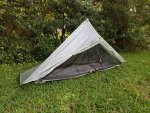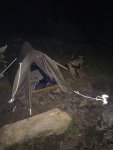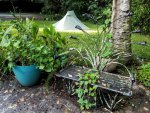dandurston
FNG
I think 0.75oz DCF fly + 70D silnylon bathrub is a bit mismatched because the floor likely has 2-3x the life of the canopy, but it could be a good match if you camp on rougher surfaces (rock etc).
0.75oz DCF does help substantially with #1 (puncture resistance) which is why besides hail etc, it also holds stitching a lot better. But switching to 0.75oz does almost nothing for issues #2 - #4. Compared to a 1.2oz woven, you give up about 1/3 of the potential weight savings but still have most of the downsides. Another downside of DCF is that snow sticks to it more, so it doesn't shed as well.
I think 0.5oz DCF is the best choice but you have to place a high value on saving weight it to make sense, and then treat it gently, and not expect it to last as long. I'd normally pair that with a 30D floor, because a 0.75oz DCF floor is a huge hit to the lifespan, while heavier DCF doesn't save weight over 30D.
0.75oz DCF does help substantially with #1 (puncture resistance) which is why besides hail etc, it also holds stitching a lot better. But switching to 0.75oz does almost nothing for issues #2 - #4. Compared to a 1.2oz woven, you give up about 1/3 of the potential weight savings but still have most of the downsides. Another downside of DCF is that snow sticks to it more, so it doesn't shed as well.
I think 0.5oz DCF is the best choice but you have to place a high value on saving weight it to make sense, and then treat it gently, and not expect it to last as long. I'd normally pair that with a 30D floor, because a 0.75oz DCF floor is a huge hit to the lifespan, while heavier DCF doesn't save weight over 30D.
Last edited:



